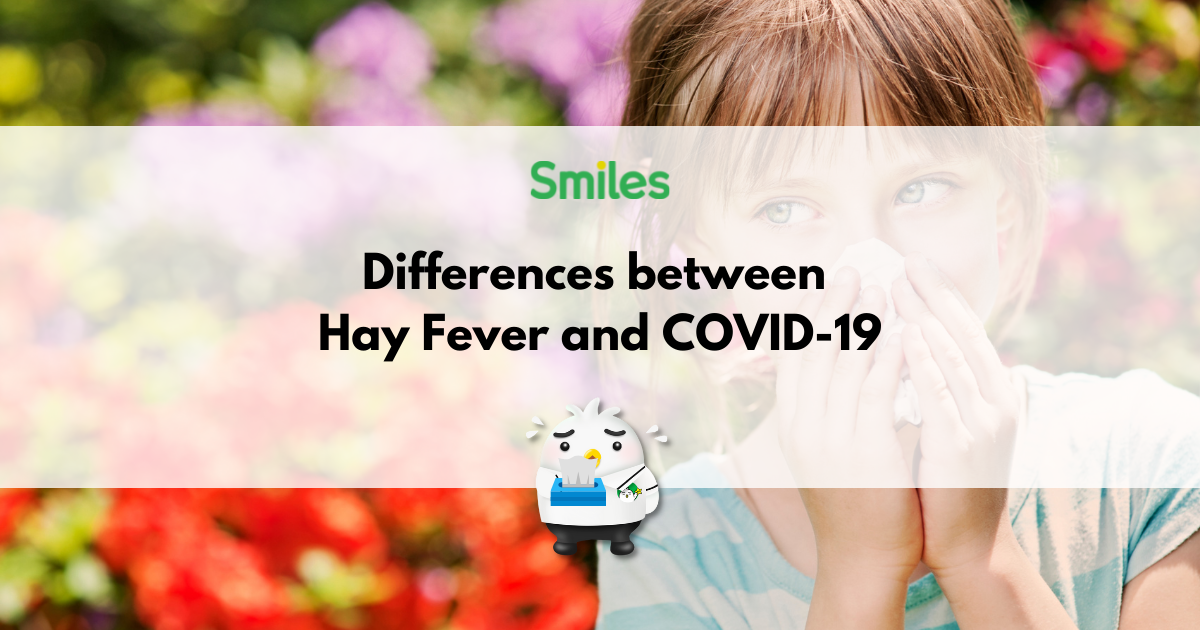
Differences between Hay Fever and COVID-19
Health
Hey there Smilers. It’s already March, and it’s going to be hay fever season soon. With COVID-19 still being infectious, it is easy to confuse the hay fever with the COVID-19 as their symptoms are similar. In this article we are going to differentiate the two and help you familiarize yourself with the symptoms.
Hey there Smilers. It’s already March, and it’s going to be hay fever season soon. With COVID-19 still being infectious, it is easy to confuse the hay fever with the COVID-19 as their symptoms are similar. In this article we are going to differentiate the two and help you familiarize yourself with the symptoms.
Table of Contents
1. What is hay fever?
Hay fever usually occurs in Japan from February through April during the spring period. The triggering factors for hay fever include: pollen, mold, pet hair, dust mites and chemical irritations. Hay fever is not contagious and will last a few weeks as you will be exposed to the pollen outside. The most common symptoms of hay fever are runny nose, sneezing and itchy eyes. It is only on rare occasions that you will have a mild fever or headache.
2. How do I prevent me from getting hay fever?
As we mentioned earlier, from February through the end of April, the pollen level will be very high in Japan. To reduce your chance of getting hay fever, we recommend that you stay at home as much as you can during that period and make sure to keep the windows closed. If you must go out, make sure to use a mask and wear sunglasses. This will help protect your face from getting exposed to pollen. We also recommend that you refrain from rubbing your eyes and wash your hands when you get home and wash your clothes that you wore out as they may gather pollen.
3. Differences in symptoms between hay fever and COVID-19
The symptoms for COVID-19 and hay fever are somewhat similar. People tend to get confused between the both of them. The table below will show you the symptoms for both hay fever and COVID-19
|
Hay fever |
COVID-19 |
|
Runny or stuffy nose |
Runny nose |
|
Sneezing and coughing |
Persistent coughing |
|
Sore eyes |
Loss in sense of smell and/or taste |
|
Itchy throat, mouth, and nose |
High fever |
|
Itchy, red, watering eyes |
Shortness of breath |
|
Reduced sense of smell |
Sore throat |
|
Pain around temples and forehead |
Aches and pains |
|
Headache |
Headache |
|
Earache |
Diarrhea |
|
Minor fatigue |
Fatigue |
The table below will show you the probability of having these symptoms for both hay fever and COVID-19. Each and every person’s conditions may vary widely.
|
Symptoms |
Hay fever |
Covid-19 |
|
Fever |
Rare-(mild) |
Common |
|
Fatigue |
Occasional |
Occasional |
|
Cough |
Occasional |
Common |
|
Sneezing |
Common |
None |
|
Joint pain |
None |
Occasional |
|
Runny nose |
Common |
Rare |
|
Sore throat |
Rare |
Common |
|
Diarrhea |
None |
Rare |
|
Headache |
Rare |
Common |
|
Shortness of breath |
Occasional |
Common |
|
Itchy eyes |
Common |
None |
If you are still unsure after checking the table above, we strongly advise you to call your local doctor or visit the hospital for a checkup. If you have any difficulty breathing, persistent chest pain or pressure and a new state of confusion or not waking, it is most likely that you have COVID-19, and we advise you to call health authorities as soon as possible.
Related article:
5 Best Foods When you Have a Japanese Flu
5 Worst Foods When You’re Having a Cold in Japan



























